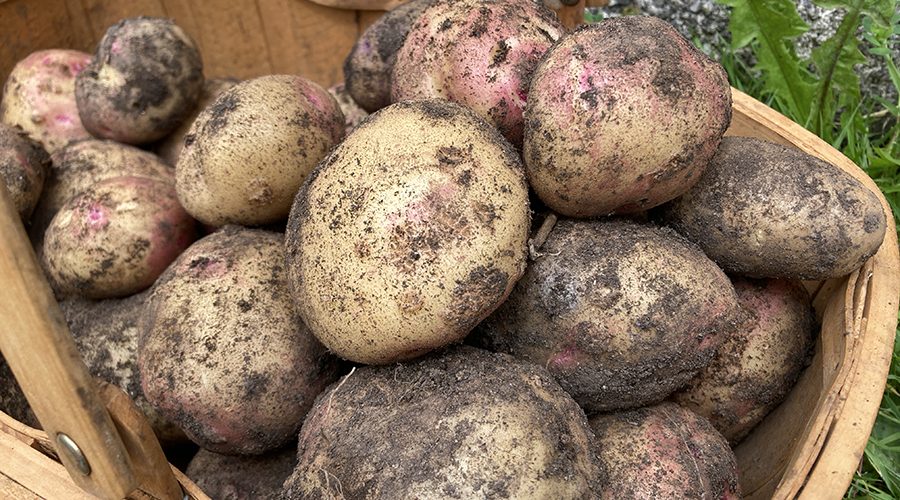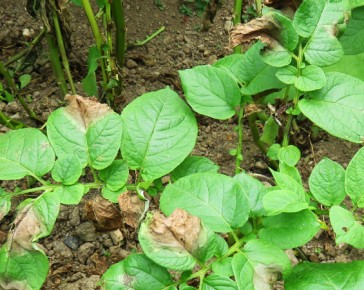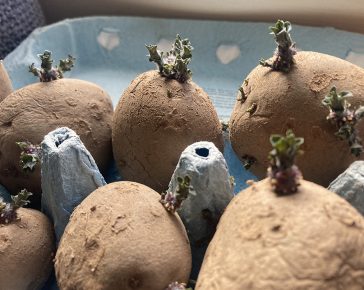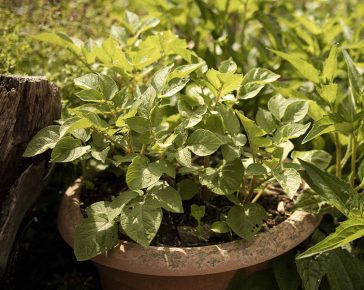Seed potatoes are one of the earliest things to go in the ground in spring, and make a lovely excuse to get out in the garden around Easter time as they are traditionally planted on Good Friday, although they can be planted out anytime from March to June really.
You can happily grow in large containers or in the ground. They are incredibly easy to grow, and as a novice potato grower, the only thing you need to get your head around is the concept of “earthing up” (explained below). Here’s a quick guide for those that are new to growing potatoes.
If growing in the ground:
- Prepare a plot for your spuds – Choose a nice, sunny site that has well draining soil. Weed the plot well, and dig over with a garden fork to loosen the soil and break up lumps. It is worth adding some fresh compost before planting. Once it is dug over, if you’re not going to be planting immediately, cover the bed with black polythene to help warm the soil a little until you’re ready to plant.
- Dig a trench that is approx 20cm deep. If you are going to be planting in two rows, leave 60-70cm between the rows. Put the seed potatoes in the trench at 40cm intervals. This is to give them plenty of space for their roots and tubers – it will help prevent blight as well as giving you a bigger crop.
- Cover the seed potatoes well with soil, bringing extra soil up around them so that you have a little ridge running along the length of the rows. Water them in if the soil is dry.
- When you see the first foliage peeping up over the soil, earth up your potatoes by covering the leaves with more soil, thus building up the ridge. Repeat this a couple more times over the following weeks until the ridge is about 20-30cm high. Doing this prevents sunlight from reaching the potatoes under the ground, and also gives you a better crop.
If growing in containers:
- If growing in planters/containers, make sure they are wide and deep. Big buckets, stacks of tyres or old wheelbarrows work really well, as long as you make sure there are drainage holes at the base.
- Fill the container half full with compost, then pop the seed potatoes on top and cover with 10cm compost.
- You can easily plant 5-6 seed potatoes into a large container.
- When you see the first foliage peeping up over the soil, earth up your potatoes by adding an extra layer of compost until the leaves are hidden. Repeat this several times over the following weeks until the pot is full.
Looking after the crop:
- Keep them weed free
- Water well during dry spells
- Protect against slugs by using beer traps
- Watch out for blight – (if you see brown patches on foliage, this is the first sign – see our separate post below)
When to harvest:
Harvest time depends on the type of potato you are growing – if you’re planting in April, then earlies and new potatoes are usually ready to harvest by late June/July when they are flowering, whilst main crop varieties will need a few extra weeks and can be harvested in August/September when the foliage starts to die back.




